Clouds and Climate Models

The simple version:
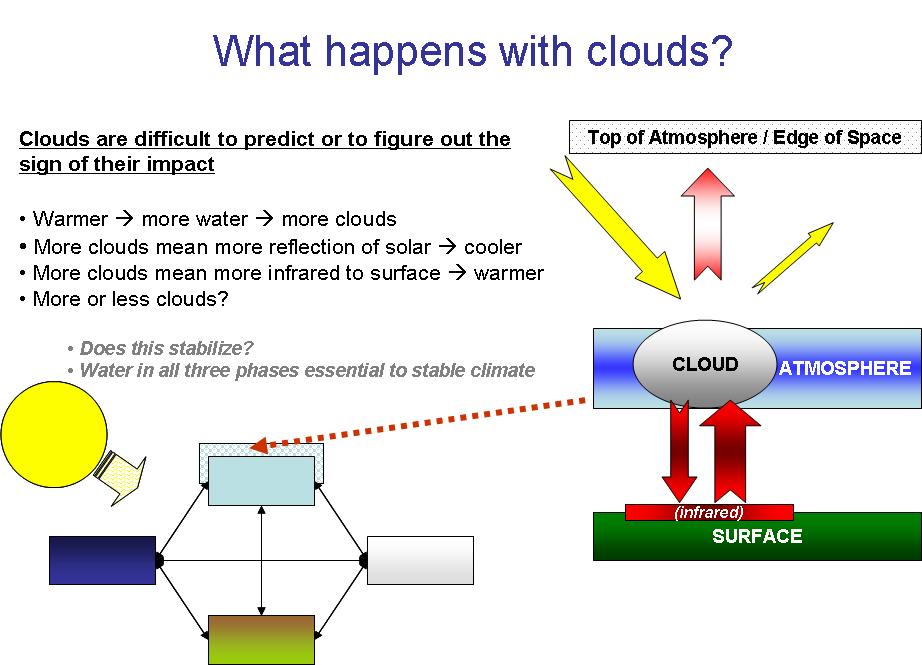
The more complex versions:

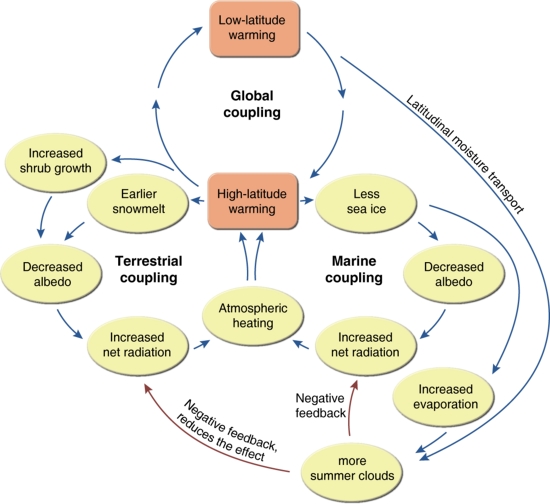
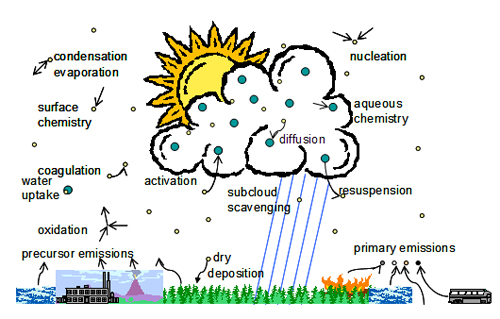
As a result of these complications and how they are modeled, there
is a wide range in predicted future temperatures:
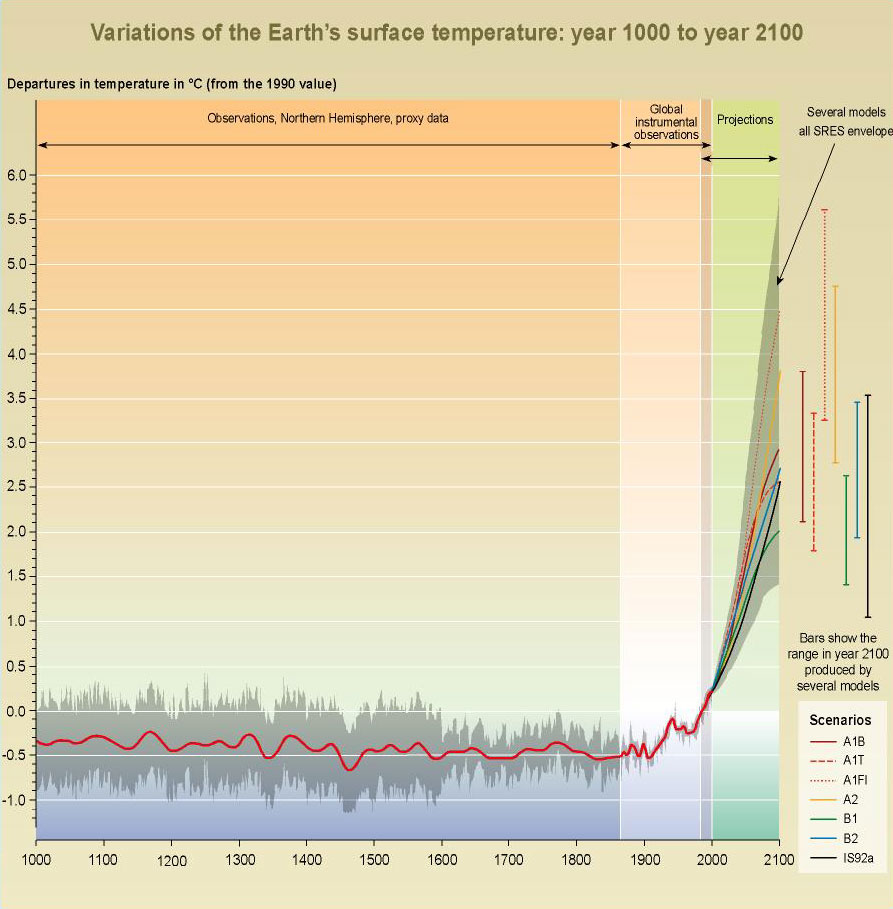
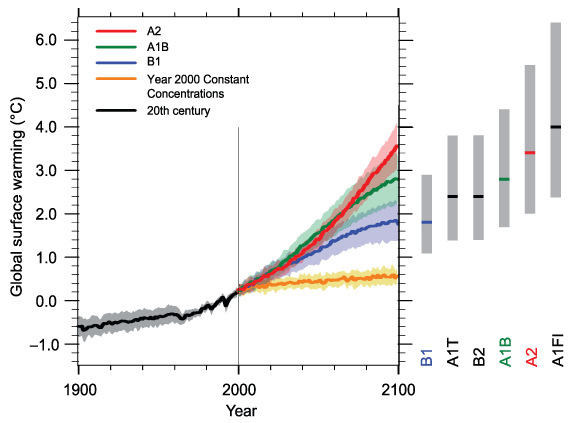
The future modeling represented in the above involves various "scenarios"
as defined by the IPCC (Intergovernmental Panel on Climate Change). While these scenarios are presented below, we remark here that while this seems to be an overly cumbersome methodology, it's nonetheless the one that has been employed.
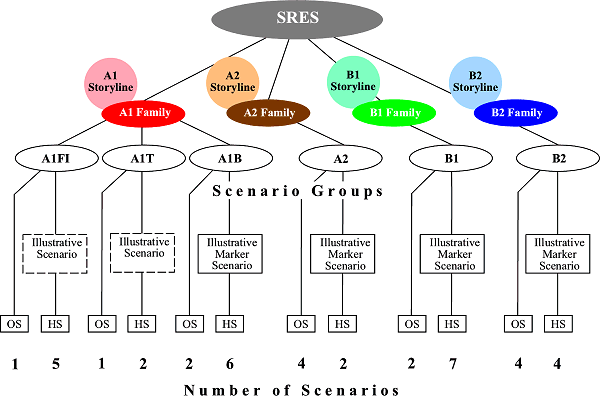
- The A1 storyline and scenario family describe a future world of very rapid economic growth, global population that peaks in mid-century and declines thereafter, and the rapid introduction of new and more efficient technologies.
- A1T represents an variant in which alternative energy technologies occur fast.
- A1F means that the world remains fossil intensive (so this is worse case).
- A1B is a balance between alternative energy technologies and fossils.
- The A2 storyline and scenario family are dominated by fertility patterns across regions that converge very slowly, which results in continuously increasing global population. Economic development is primarily regionally oriented and per capita economic growth
and technological change are more fragmented and slower than in other storylines.
- The B1 storyline and scenario family describe a convergent world with the same global population that peaks in mid-century and declines thereafter, as in the A1 storyline, but with rapid changes in economic structures toward a service and information economy with reductions in material intensity, and the introduction of clean and resource-efficient technologies.
This is also known as the Pollyanna scenario.
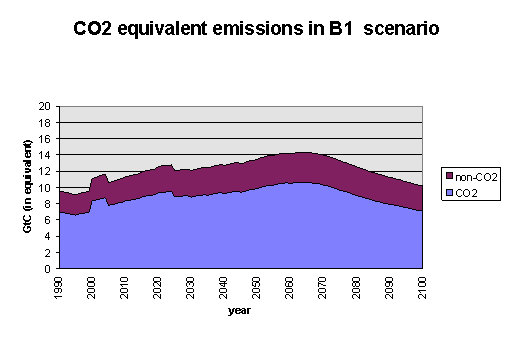
- The B2 storyline and scenario family describe a world in which the emphasis is on local solutions to economic, social,
and environmental sustainability. It is a world with continuously increasing global population at a rate lower than A2,
intermediate levels of economic development, and less rapid and more diverse technological change than in the B1 and A1 storylines.
Hopefully, the world is on the A1T trajectory (as that one is realistic), but the problem is that there is no way to accurately measure what trajectory we are on while we are on it.
Additionally, within each scenario, there is a large range in uncertainty itself. (Difference between panels b and c for the B1 scenario represent whether or not cloud feedbacks are included.)










